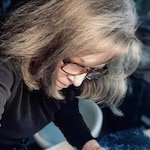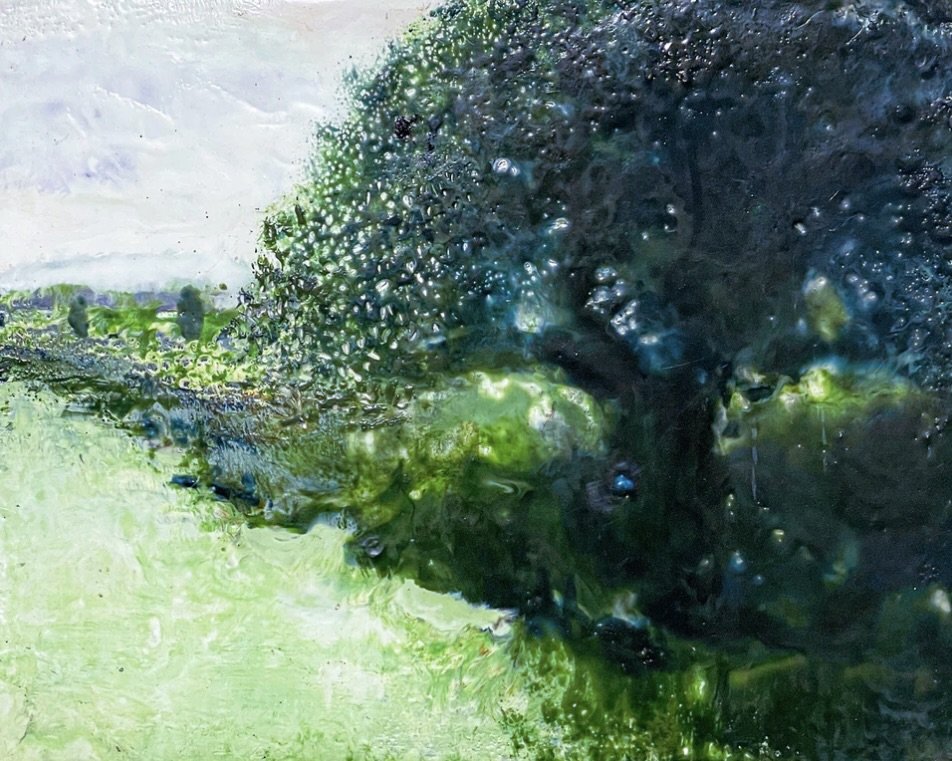
Art runs in my family. My great grandfather was an architect in Germany before they immigrated to the U.S. before WWI. His daughter, my grandmother, was a businesswoman, but painted in oils and pastels most of her life. Early on, I remember my father’s beautiful blueprint drawings of the houses he designed and the funny cartoons he loved to draw. He painted in oils.
I’ve always drawn, and began private oil painting lessons at fourteen. I attended the Honolulu Museum of Arts Academy, a two year degree in commercial and fine art. I’ve studied with various artists over the years in many different mediums, and settled into watercolor as my chosen medium in the late 70’s. I went back to school then to study psychology, earning several degrees and licenses in clinical psychology and worked as a clinical therapist for fifteen years. I returned to my artist roots in 2000 after being accepted into the McGuffey Art Center in Charlottesville as a resident artist. I was juried in as a watercolorist, but was already looking at ways to expand my skill and interest into other mediums.
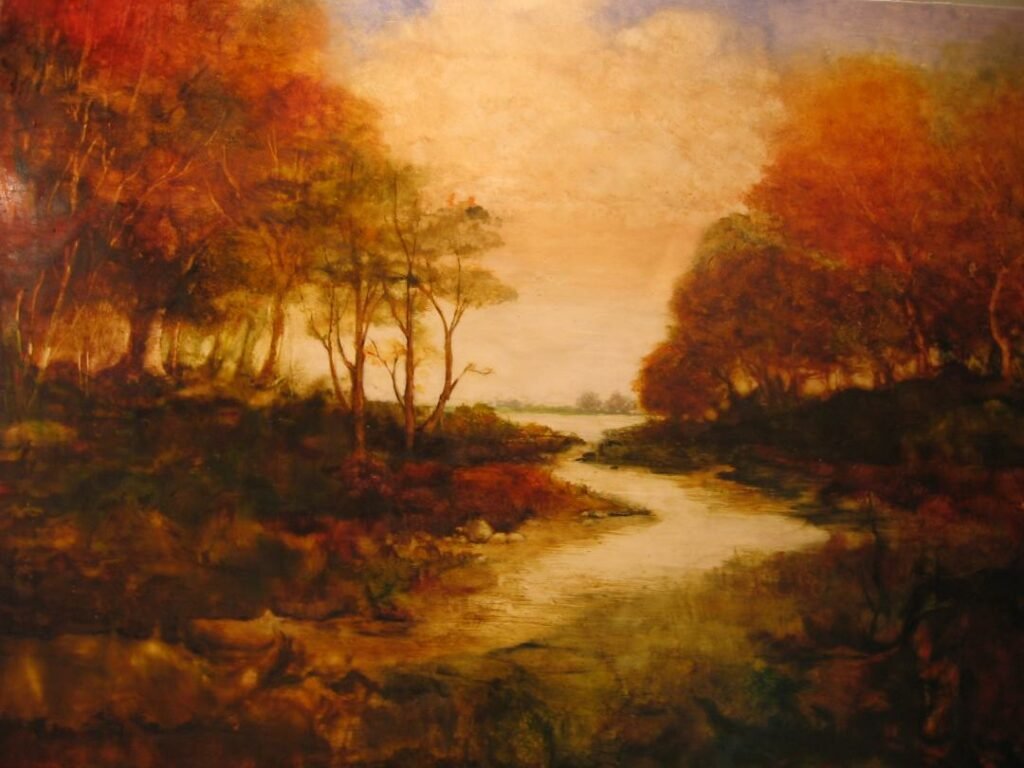
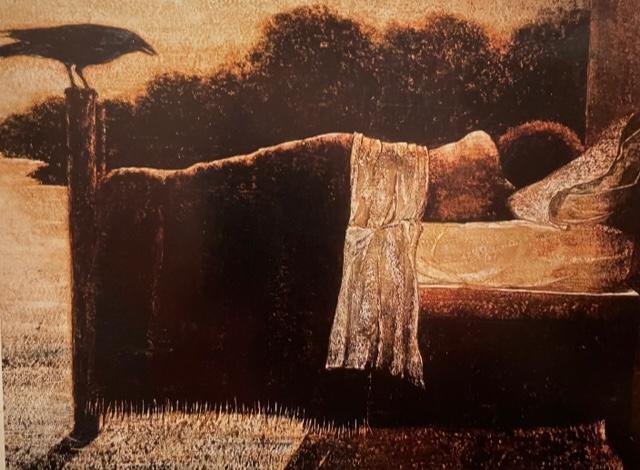
Early in my watercolor days, I was very much influenced by American watercolorist Thomas Daly, painter Dwight William Tryon, and British artists George Inness, and William Blockley. I love artist Odd Nerdrum’s pathos filled paintings, Mary Oliver’s poetry, and Michael Workman’s horses.

I loved the flow and transparency of watercolor, but not the restrictions I felt the medium required. Another McGuffey artist was experimenting with waxing her paintings and I was intrigued with the process—the ability to add layers, without losing transparency and the beautiful flow of hot, pigmented wax into compositions I could only dream about in watercolor! The R&F encaustic paint factory in N.Y. was offering instruction in the medium and I spent parts of several summers studying various different methods of painting with wax with contemporary artists in the field.
The encaustic process consists of painting with hot, pigmented beeswax on wood panel. The wax is heated to 200 degrees on an electrically heated palette. Each layer applied is reheated to the layer under it so that a fusing of layers occurs. Wood is most often used due to its absorbency and its inflexible nature. It can also be done on paper that’s mounted to wood. Encaustics will accept collaged paper, photographs, transfers, and embedded objects. The ancient Greeks and Egyptians caulked their ships with beeswax that was pigmented, and later their statuary. The Fayum portraits, done in the early AD’s are still vibrant and beautiful today, two thousand years later.


Mesmerized by the beauty of the flow, I spent the first years just letting the medium control the design. Over the years, I have developed ways of layering, then scraping, digging, adding, fusing, then repeating the layering, etc. until I get the transparent, complex, often moody effect that’s the signature of my work.
At present, I consistently work in encaustics, but when I travel, due to the logistic difficulty of taking all the equipment I need for encaustics, I revert to watercolor.

Always, though, I continue the exploratory use of gessoed paper, raw canvas, and other manipulated surfaces that I had developed during my earlier watercolor days. These methods were rewarded when, in 2002, I won best in show at the annual Virginia Watercolor Society Show. Later that year, I won the Alexander Nepote Award for Experimental Watercolor at the National Watercolor Society’s annual show in Los Angeles.
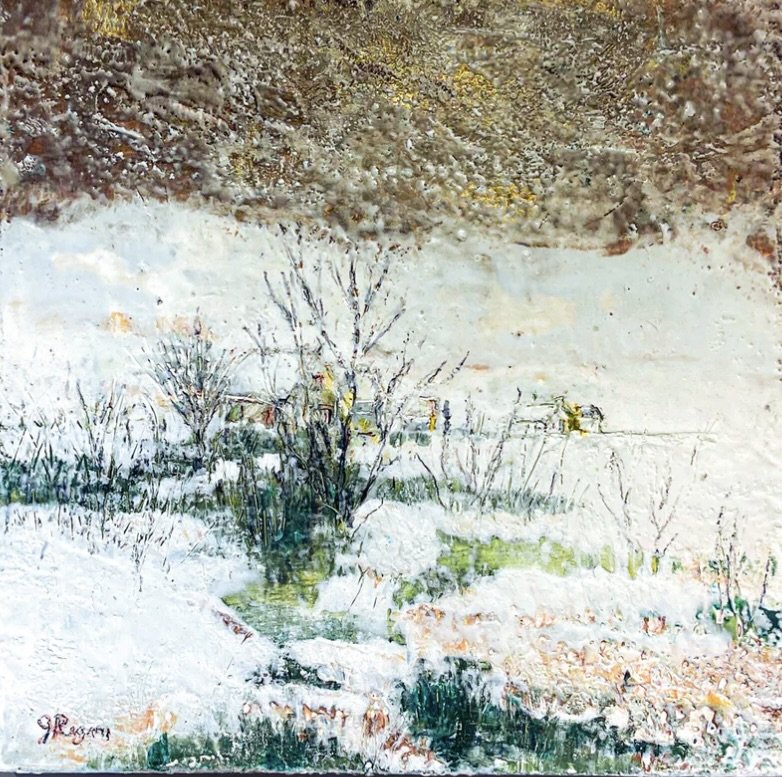
The appeal of encaustics is in its flexibility. When I paint in encaustics I feel the medium is working with me. “We” are creating together, a partnership that says ” let’s just see, where this goes . . . ” Some paintings just seem to paint themselves. This has never seemed true of watercolor, which often felt like a skirmish between the medium and me, one I wasn’t always sure of winning. Technical knowledge is needed before control can be had over the medium. I always tried to get around this experimenting with grounds and manipulations which eventually developed into a signature watercolor style.
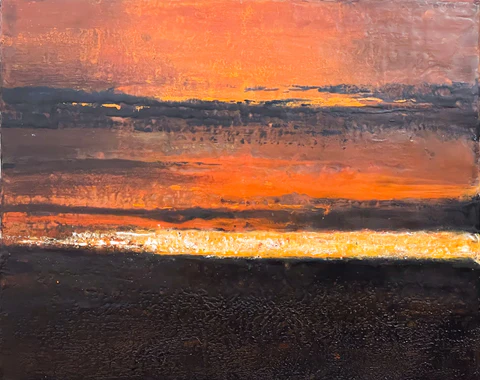
My paintings explore the ambiguous line between the abstract and the literal, striving to capture the essence of, and the evocative feeling of a place or experience long before the images form to describe it. The work is a process of building up and tearing down, adding and then excavating, scraping and melting (encaustics), and pushing the image to the edge of loss, and then bringing it back again. My images are often filled with a moody, earthy, textural energy that has become my work’s signature.
I very seldom paint plein air. Most of what ends up on my panels is internal interpretation of what I’m feeling transferred into wax and pigment, and the landscape is the language.

My style of encaustics is meditative, a reflection of the striving for peace and equanimity in myself. I have a meditation practice that I think/hope is reflected in my work. I find this peace in landscapes most often. I want the viewer to want to dive into my paintings, to desire to be in the midst of the images themselves, as I often do. I find these images most often at the beginning of day, and just as the sun goes down, in twilight. These are quiet times when the landscape heaves a sigh of relief, a serenity before/after the world wakes/sleeps, that seems most natural and peaceful to me. Winter is the season that imparts the most introverted and contemplative natural evolution, as night presents the most spiritual cleansing from the day.

Share this post with your friends.

